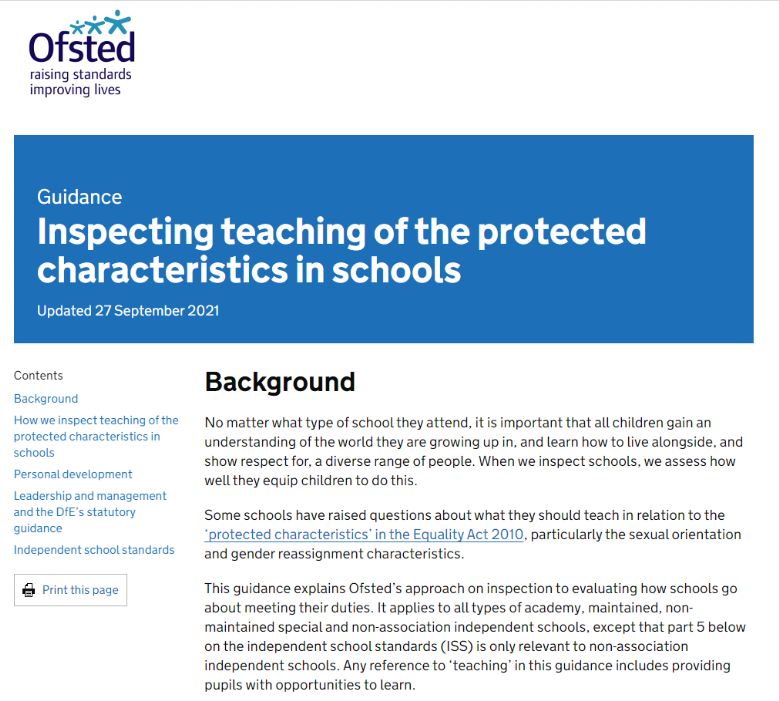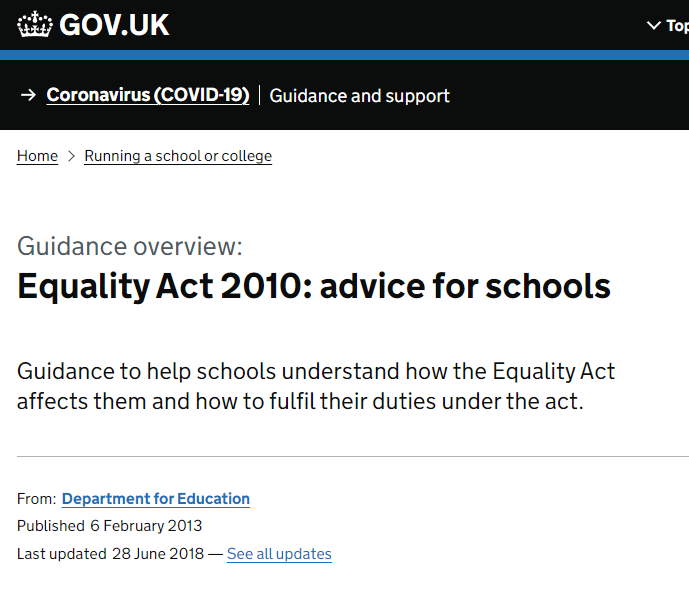Equalities
Aim
All are expected embrace and welcome difference in themselves and each other to make Chesswood Junior School a truly inclusive community. We don’t seek equality, instead we focus on equity, where we strive to ensure individuals get what they need rather than get the same as others within the context of a welcoming, confident and inclusive culture.
The whole school community fully supports its duty (Equality Act 2010) as a public body to:
- Eliminate discrimination and other conduct that is prohibited by the Act,
- Advance equality of opportunity between people who share a protected characteristic and people who do not share it,
- Foster good relations across all characteristics - between people who share a protected characteristic and people who do not share it.
- Support core British Values – democracy; the rule of law; individual liberty; mutual respect & tolerance
As a school, we will always act robustly to any behaviour, intentional or reckless, that would put inclusion at risk within our community.
guiding Principles
We are committed to providing equality of opportunity for all by eliminating discrimination. We will do this by ensuring that our practices reflect relevant employment legislation and good practice. Our employment decisions are based upon job related, objective criteria.
We are committed to having a workforce that reflects the diversity within our community where everyone is treated with dignity and respect.
We welcome our duties under the Equality Act 2010 to eliminate discrimination. As a school we celebrate differences and support each other so that everyone can reach their full potential regardless of disability, ethnicity, gender, religion, belief and sexual identify.
In school we are guided by five principles:
Principle 1: All learners are of equal value.
We see all learners and potential learners, and their parents and carers, as of equal value:
- whether or not they are disabled
- whatever their ethnicity, culture, national origin or national status
- whatever their gender and gender identity
- whatever their religious or non-religious affiliation or faith background
- whatever their sexual identity
- whatever their socioeconomic status
Principle 2: We recognise and respect difference.
Treating people equally (Principle 1 above) does not necessarily involve treating them all the same. Our policies, procedures and activities must not discriminate but must nevertheless take account of differences of life-experience, outlook and background, and in the kinds of barrier and disadvantage which people may face, in relation to:
- disability, so that reasonable adjustments are made
- ethnicity, so that different cultural backgrounds and experiences of prejudice are recognised
- gender, so that the different needs and experiences of girls and boys, and women and men, are recognised
- religion, belief or faith background
- sexual identity
- socioeconomic status.
Principle 3: We foster positive attitudes and relationships, and a shared sense of cohesion and belonging.
We intend that our policies, procedures and activities should promote:
- positive attitudes towards disabled people, good relations between disabled and non-disabled people, and an absence of harassment of disabled people
- positive interaction, good relations and dialogue between groups and communities different from each other in terms of ethnicity, culture, religious affiliation, socioeconomic status, national origin or national status, and an absence of prejudice-related bullying and incidents
- mutual respect and good relations between boys and girls, and women and men, and an absence of sexual and homophobic harassment.
Principle 4: We observe good equalities practice in staff recruitment, retention and development.
We ensure that policies and procedures should benefit all employees and potential employees, for example in recruitment and promotion, and in continuing professional development:
- whatever their age
- whether or not they are disabled
- whatever their ethnicity, culture, religious affiliation, national origin or national status
- whatever their gender and sexual identity, and with full respect for legal rights relating to pregnancy and maternity.
Principle 5: We aim to reduce and remove inequalities and barriers that already exist.
In addition to avoiding or minimising possible negative impacts of our policies, we take opportunities to maximise positive impacts by reducing and removing inequalities and barriers that may already exist between:
- disabled and non-disabled people
- people of different ethnic, cultural and religious backgrounds
- girls and boys, women and men.
Employee and Volunteer Responsibilities
All employees, irrespective of their role, have a personal responsibility to comply with this policy, associated policies and to abide by the Equality Act 2010, in dealing with each other, managing staff and in their relationships with children, parents, carers, governors and other stakeholders.
In particular, employees, must not:
- discriminate against colleagues, other workers, job applicants, children, parents, carers, governors or other stakeholders;
- bully or harass colleagues, other workers, job applicants, children, parents, carers, governors or other stakeholders;
- encourage or try to encourage another person to treat others unfairly or to practice unlawful discrimination;
- victimise people who have made allegations or complaints of discrimination or who have provided information about such discrimination.
We will not tolerate any of the above behaviours. Where employees commit an act of unjustified or unlawful discrimination, or allow discrimination to occur without taking appropriate action, then they could be liable to a claim being brought against them as an individual, for example at an Employment Tribunal. The employee could also be liable to disciplinary action for a breach of the County Council’s Standards of Conduct, which could result in dismissal.
Protected Characteristics
The Act protects people from discrimination and harassment based on the following ‘protected characteristics’:
- Age
- Disability.
- Gender reassignment.
- Marriage and civil partnership
- Pregnancy and maternity.
- Race.
- Religion or belief.
- Sex.
- Sexual orientation.
Decision makers in schools must be aware of the duty to have “due regard” when making a decision or taking an action which may have implications for people with particular protected characteristics.
Information on Other Groups of Pupils
In addition to pupils with protected characteristics, we gather further information on the following groups of pupils:
- Pupils eligible for Free School Meals (FSM)
- Pupils with Special Educational Needs (SEN)
- Disadvantaged group
- Pupils with English as an Additional Language (EAL)
- Young carers
- Looked after children
- Other vulnerable groups
Focus on Challenges Faced
As a school we focus on the challenges that we know we will face:
- Narrowing gaps in attainment between groups of pupils
- Improving attendance of pupils from particular groups
- Increasing the participation of particular groups in school activities
- Reducing prejudice-related bullying and the use of derogatory language
- Improving knowledge, skills and attitudes to enable pupils to appreciate and value difference and diversity
- Improving the participation and engagement of different groups of parents and communities
Objectives
In order to further support pupils, raise standards and ensure inclusive teaching, we have set the following objectives:
-
To monitor and analyse pupil achievement by race, gender and disadvantage to ensure they are performing as well as other children within school and act on any trends or patterns in the data that require additional support for pupils.
-
To review levels of parental and pupil engagement in learning and school life, across all activities to ensure fair access.
-
To seek to over-represent pupils’ participation in leadership roles, clubs and school representation by race and disadvantage.
-
To educate all children on respect and diversity
- To ensure that our curriculum includes opportunities for our pupils to encounter people from a range of protected characteristics
- Women in science / history
- Black History Month
- Religious Education and People, Places and Events Assemblies
- Disability awareness
- Improving accessibility across the school
- Reducing incidences of homophobia, and sexist and racist language by students
Guide |
Link |
Inspecting Protected CharacteristicsNo matter what type of school they attend, it is important that all children gain an understanding of the world they are growing up in, and learn how to live alongside, and show respect for, a diverse range of people. When we inspect schools, we assess how well they equip children to do this. Inspectors will gather evidence on how schools promote equality and pupils’ understanding of the protected characteristics. They will use this evidence as part of evaluating and coming to judgements on 3 main areas:
If inspectors identify at inspection that a school is not teaching about all the protected characteristics, they will always report on this and will explain how (if at all) it has affected the school’s inspection judgements. Click on the image opposite to find out more or follow this LINK |
|
DFE Equality Advice for SchoolsWho is this advice for? This advice is for school leaders, school staff and governing bodies in maintained schools and academies but may also be useful for local authorities and parents. Key points The Equality Act 2010 provides a single, consolidated source of discrimination law. It simplifies the law and it extends protection from discrimination in some areas. As far as schools are concerned, for the most part, the effect of the current law is the same as it has been in the past – meaning that schools cannot unlawfully discriminate against pupils because of their sex, race, disability, religion or belief or sexual orientation. The exceptions to the discrimination provisions for schools are all replicated in the current act – such as the content of the curriculum, collective worship and admissions to single sex schools and schools of a religious character. Schools that were already complying with previous equality legislation should not find major differences in what they need to do. Click on the image opposite to find out more or follow this LINK |


